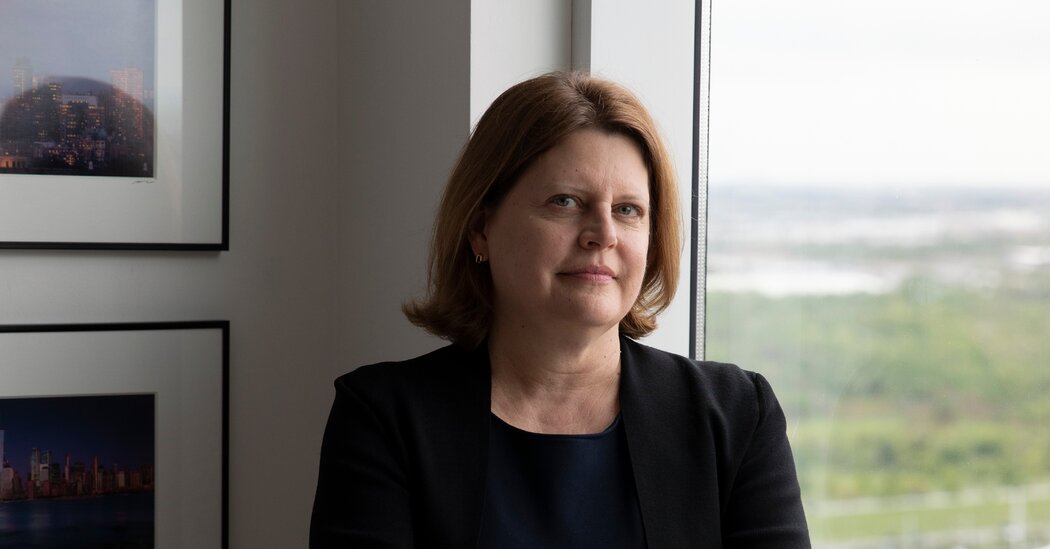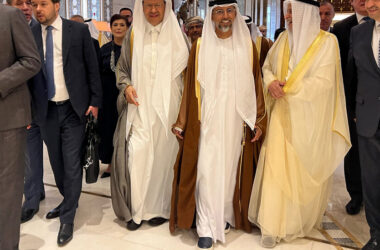On Sunday night, minutes after Will Lewis, the chief executive of The Washington Post, informed employees that the newspaper’s executive editor, Sally Buzbee, was being replaced, managers gathered on a conference call to hear from their boss one last time.
Ms. Buzbee told them that a new organizational structure created by Mr. Lewis — effectively splitting the Washington Post newsroom and opinion section into three smaller divisions — didn’t work for her. She added that Mr. Lewis was pushing for aggressive moves to turn around The Post, and asked editors to reserve judgment for now.
“I would have preferred to stay to help us get through this period, but it just got to the point where it wasn’t possible,” Ms. Buzbee said, according to a person familiar with the matter.
The stunning call — which some attendees described as funereal — added to the growing tension between the newsroom and Mr. Lewis, who has set about remaking The Post since he started in January.
Many reporters and editors figured that Ms. Buzbee would remain in place until at least the presidential election in November. Just two weeks ago, Mr. Lewis and Ms. Buzbee had addressed The Post’s staff together at a long-awaited all-hands meeting in which Mr. Lewis discussed his vision for The Post.
When Mr. Lewis revealed his plan to separate The Post’s newsroom into segments, he said she could run one of them, according to a person with knowledge of the interactions. Ms. Buzbee chafed at the idea, according to two people familiar with her thinking.
The reorganization would have been an effective demotion for Ms. Buzbee, who had been in charge of all news content at The Washington Post. The structure adds a division focused on service and social media journalism under the supervision of a new editor, which would have pulled a large portion of The Post’s editorial output out from under Ms. Buzbee’s supervision.
On Sunday, Mr. Lewis told Ms. Buzbee that he was appointing another person to her job, according to a person with knowledge of the talks.
Mr. Lewis is temporarily replacing Ms. Buzbee with Matt Murray, the former editor in chief of The Wall Street Journal. Mr. Murray will run The Post’s newsroom as executive editor through the election, at which point he will transition to run the division focused on service and social media journalism. Mr. Lewis had been considering hiring Mr. Murray for a senior editorial role at The Post for more than a month, according to a person with knowledge of their discussions, though another person familiar with the talks said Mr. Lewis first directly approached Mr. Murray about this role a week ago.
A new editor, Robert Winnett, will take over the company’s core coverage areas after the election. For the past decade, Mr. Winnett has run news operations at The Daily Telegraph and The Sunday Telegraph.
David Shipley will continue to run The Post’s opinion section. All three — Mr. Winnett, Mr. Murray and Mr. Shipley — will report directly to Mr. Lewis.
A spokeswoman for The Washington Post declined to say whether Jeff Bezos, the owner of the newspaper, was aware of or approved the leadership changes announced on Sunday evening.
Mr. Murray, 58, was introduced to The Post’s newsroom on Monday, in a town-hall meeting that kicked off with a long round of applause for Ms. Buzbee, according to several people in attendance. Under her leadership, the Post greatly expanded its editing ranks and received six Pulitzer Prizes, three of them this year.
During the meeting on Monday, the executives were grilled by reporters at The Post on the lack of diversity in the hires replacing Ms. Buzbee — Mr. Murray, Mr. Winnett and Mr. Shipley are white men.
According to a recording obtained by The New York Times, one of The Washington Post’s star political reporters, Ashley Parker, asked how the newspaper had arrived at its decision, adding that one skeptical interpretation might be that Mr. Lewis was simply hiring his associates to help run The Post.
Mr. Lewis is in many ways orchestrating a reunion with people that he worked with during earlier chapters of his career. As the publisher of The Wall Street Journal, he appointed Mr. Murray to the top editorial position at the paper in 2018. And he worked with Mr. Winnett for years, first at The Sunday Times and then at The Telegraph.
“When you were here before, you talked very movingly about how you care about diversity — and people talk about diversity — but then when push comes to shove, they say, ‘Well, I looked around and I couldn’t find anyone,’” Ms. Parker said.
In response, Mr. Murray said that diversity would be a “constant commitment” at The Post, adding that he had “the most diverse masthead that The Journal had ever had” during his years as the top editor at The Wall Street Journal.
Mr. Murray wasted no time familiarizing himself with The Post’s newsroom. On Monday, he began taking meetings in Ms. Buzbee’s old office on the seventh floor, hours after her sudden departure. Her nameplate has already been removed.
In a statement on Monday, The Washington Post Guild said that it was “troubled” by Ms. Buzbee’s sudden departure and the lack of diversity in The Post’s top ranks.
The editorial change-up comes at a delicate time for The Washington Post. The newspaper is preparing to cover the homestretch of the presidential election, including the nominating conventions in Chicago and Milwaukee this summer. It is highly unusual to replace the top editor of a major U.S. newspaper during this period.
At the all-hands meeting two weeks ago, Mr. Lewis rattled off a list of priorities that included “build it,” “fix it” and “say it.” Mr. Lewis revealed that The Post was in dire straits, with more than $70 million in losses over the last year and audience declines of 50 percent since 2020.
Near the end of the meeting on Monday, Kainaz Amaria, The Post’s national visual enterprise editor, said that Ms. Buzbee’s treatment “didn’t feel fair,” adding that the circumstances of her exit could make it difficult to trust new leadership.
“To start off like this is very difficult,” Ms. Amaria said, according to the recording.




